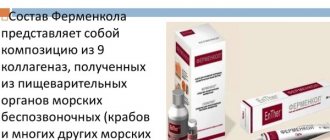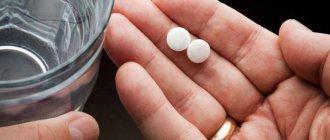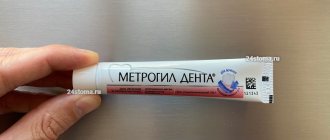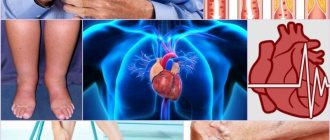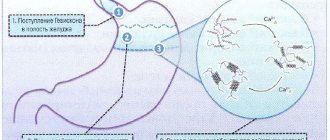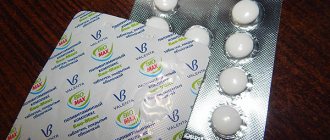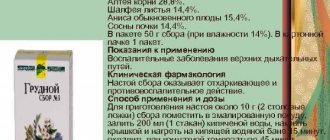Composition of the drug Nise gel
The main analgesic effect of the gel is due to the non-steroidal anti-inflammatory substance included in the composition - nimesulide. It, being a selective inhibitor, has fewer side effects and blocks the production of cyclooxygenase, which is activated only at the time of formation of the inflammatory reaction and synthesizes a larger number of prostaglandins. It is the process of synthesis of excess prostaglandins that provokes a number of negative reactions, accompanied by pain, swelling and increased body temperature.
With local inflammation, the temperature rises locally, only at the site of the bruise. Nimesulide inhibits the development of the inflammatory process and soothes the affected area.
The following additional components are used:
- propylene glycol;
- thiomersal;
- butylated hydroxyanisole;
- purified water;
- flavoring
Nise gel is packaged in aluminum tubes, which, in turn, are packaged in cardboard boxes.
Pharmacodynamics
The active ingredient of Nise gel belongs to the class of sulfonanilides. The main pharmacological effect of nimesulide is to block the enzyme as a direct participant in the synthesis of prostaglandins from polyunsaturated fatty acids . These biologically active substances transmit nerve impulses from one cell to another and initiate the spread of pain. Increased production of prostaglandins causes the following pathological conditions:
- formation of inflammatory foci;
- formation of edema of varying localization and severity;
- the occurrence of painful sensations.
The active ingredient of Nise gel prevents the production of prostaglandin E2 not only in inflammatory foci, but also in the nociceptor system, which makes innervation in the spinal cord impossible.
One of the main mechanisms of action of the active ingredient of Nise gel is a decrease in the concentration of rapidly converted prostaglandin H2. It is this that prostaglandin isomerase acts on, forming a mediator of pain, swelling and inflammation - prostaglandin E2 - during a complex biochemical reaction.
A gradual decrease in the content of prostaglandins in tissues leads to a decrease in the activity of prostanoid receptors. This condition is characterized by an analgesic and anti-inflammatory effect. An important point of all mechanisms of action of Nise gel is the absence of any effect on the formation of prostaglandins from arachidonic acid. This explains the small list of contraindications and side effects of this external medicine.
Nise gel also exhibits pronounced anti-edematous activity immediately after application to the skin due to the ability to trigger the following mechanisms of action:
- suppression of red blood cell aggregation by reducing the synthesis of endoperoxides and thromboxane A2;
- inhibition of the activation of circulating proenzyme by increasing the content of inhibitor-1;
- preventing the release of the biologically active substance histamine, which provokes tissue swelling and allergic reactions;
- promotes the formation of lymphocytes produced by the immune system to destroy foreign proteins.
One of the undoubted advantages of Nise gel is the rapid reduction of interleukin-6 and urokinase - the main culprits of degenerative changes in cartilage tissue. Nimesulide is involved in the synthesis of elastase and collagenase, which ensure optimal functioning of the human musculoskeletal system.
The active ingredient of Nise gel exhibits powerful antioxidant activity. Nimesulide prevents cell destruction by free radicals and prevents tissue damage from toxic breakdown products of molecular oxygen.
Pharmacological group
Nise gel belongs to the group of non-steroidal anti-inflammatory drugs that block the release of substances that provoke pain. In the matter of joint pain, it is necessary to control the synthesis of prostaglandin H2. and E2. At the site of inflammation, these substances are produced with great intensity, and impulses from them enter the spinal cord.
Nise gel is able to block the synthesis of these substances. This action has an analgesic effect. In addition, the use of the gel relieves the severity of inflammation.
If the work of the joints is difficult after sleep, Nise gel is used before the development of the inflammatory process. This allows you to start your day pain-free.
When used topically, nimesulide is not absorbed into the blood or is absorbed in extremely low doses. The maximum possible concentration of the substance is achieved only at the end of the first day of use of the product, and its volume is almost 300 times less than after a single oral dose of nimesulide. No derivative metabolites of the substance are detected in the blood.
pharmachologic effect
The unique combination of active and auxiliary ingredients of Nise gel allows it to be used as a means for complex treatment. Doctors include the drug in therapeutic pathogenetic regimens to prevent further destructive and degenerative destruction of articular and cartilage tissues. And the anti-inflammatory effect of the external agent provides a rapid reduction in symptoms: pain, stiffness of movement, severe swelling.
The synthesis of Nise gel, the main effect of which is aimed at suppressing the activity of cyclooxygenase, made it possible to avoid the occurrence of pronounced side effects from oral administration of PVNP. This drug is completely safe for patients with high blood pressure and those prone to ulceration of the mucous membranes of the gastrointestinal tract.
Pain is the body’s protective reaction to the influence of internal and external negative factors. Two mechanisms are involved in its launch:
- local _ After the development of the inflammatory process, the nerve impulse is transmitted to the central nervous system;
- central _ The brain recognizes pain and produces a response to the occurrence of the received signal.
Pain, as a companion to almost all diseases of the musculoskeletal system, is initiated by various substances that excite nociceptors (tissue, plasma, tachykinins). A course of use of Nise gel allows you to prevent the development of events in such a negative scenario, reduce the severity of discomfort by stopping the inflammatory process.
Indications for use of Nise gel
Nise gel is prescribed for diseases of the musculoskeletal system. Among them:
- rheumatoid arthritis;
- joint damage by osteoarthritis;
- radiculitis;
- inflammation of ligaments and articular discs, as well as bursitis;
- muscle pain caused by rheumatism;
- exacerbation of gout.
In addition to diseases, Nise gel is recommended for use after injuries:
- bruises;
- sprains;
- dislocations;
- ligament ruptures.
When the joints are affected due to the progression of psoriasis, you can relieve inflammation by rubbing in Nise gel. However, if there is an ulcer or psoriatic plaque on the surface of the skin above the joint, applying the gel is undesirable, especially when any trauma to the surface of the scaly wound leads to bleeding and increased inflammation.
Indications for use
Nise gel is included in the therapeutic regimens of patients diagnosed with various diseases of the musculoskeletal system. A topical medication is used to prevent further destruction of bones, cartilage and joints. The drug is used to relieve the inflammatory process and reduce the severity of pain during exacerbation of chronic diseases of the spinal column. In the treatment of injuries and severe bruises, the use of Nise gel is also practiced to eliminate swelling of soft tissues located near the injuries.
The medicine can be used at home to treat large hematomas (bruises). The active ingredient of the drug helps to quickly regenerate damaged small blood vessels, restore microcirculation and reduce the severity of swelling.
Nise gel is used as a pathogenetic and symptomatic treatment for the following pathologies:
- radiculitis;
- gout at the relapse stage;
- rheumatoid arthritis;
- osteochondrosis of any localization (cervical, thoracic, lumbar);
- Bekhterev's disease;
- psoriatic arthritis;
- osteoarthritis;
- osteoarthritis;
- periarthritis;
- tendinitis;
- lumbago;
- sciatica;
- bursitis.
Neurologists recommend that patients rub the drug into the area of inflammation in cases of pinched nerves in the spinal column, intervertebral hernias and neuralgia. Nise gel quickly relieves pain and swelling from sprained ligaments, including the ankle.
Nise gel: instructions for use
Nise gel is used exclusively topically, externally. It is important to avoid contact with the mucous membranes of the eyes. Immediately before application, be sure to rinse the surface to be treated and dry it with a towel. A small amount of gel is enough for one joint. The length of the extruded strip of the product should not exceed 3 cm. The gel is distributed over the inflamed area. No rubbing required.
You can repeat the dose no more than 4 times a day. If the pain does not subside within 10 days, you must contact a traumatologist or surgeon to diagnose the cause of the pain. The injury will go away during this time, but more serious consequences of the injury require professional intervention. Pain that does not subside after 10 days may indicate a fracture, cracks or ligament rupture. Such injuries require immobilization of the joint and specialist supervision.
Instructions for use
Nise gel is well absorbed by the skin due to its delicate consistency. To improve absorption and prevent the development of bacterial infection, the drug should be applied only to clean skin. There should be no damage to it, not even microtrauma (cracks, wounds, scratches). Maximum diffusion of the main ingredients is ensured by the presence of auxiliary components in the gel base.
When using gel and Nise tablets simultaneously, daily and single dosages can vary significantly. When carrying out complex treatment, the amount of the drug for oral administration is reduced by 2-3 times.
It is necessary to apply the medicine only to those areas of the body where pain is felt. The gel cannot be rubbed in; it should only be spread in a thin layer on the surface of the skin. The annotation states that to ensure an analgesic and anti-inflammatory effect, it is enough to squeeze out a column of the product no more than 3 cm long from the tube. When diagnosing injuries in large areas of the body, the amount of gel can be increased.
The maximum concentration of nimesulide in tissues affected by inflammation is achieved by applying the gel 2-3 times during the day. The duration of the therapeutic course does not exceed 4 weeks. Longer use will cause the accumulation of drug ingredients in tissues, which leads to the development of an allergic reaction such as urticaria. After applying the drug to the skin, you should wash your hands, since when nimesulide gets into the eyes and mucous membranes, a burning sensation occurs.
After 3-4 weeks of treatment, neurologists or surgeons evaluate the effectiveness of Nise gel. If the therapy does not bring results, or they are minimal, the doctor replaces the drug with another drug.
Contraindications
First of all, individual intolerance to nimesulide should be noted as the main and unconditional contraindication. Separately note:
- bronchial asthma;
- hives;
- recurrent formation of nasal polyps;
- angioedema;
- intolerance to acetylsalicylic acid.
Regarding the functioning of the digestive system, the following contraindications are noted:
- stomach ulcer;
- any internal bleeding;
- erosion of the gastric mucosa.
If the painful joint is located under the affected area of skin, rubbing Nise gel into it is unacceptable. Any open wounds should be treated in accordance with the rules of antiseptic care, without directly applying any medications to open areas of the affected epidermis.
During pregnancy and lactation, women are contraindicated in taking non-steroidal anti-inflammatory drugs, even topically. In addition, renal and liver failure do not allow the administration of Nise gel due to the inability to remove absorbed concentrations from the body.
Pharmacokinetics
The active and auxiliary ingredients of Nise gel penetrate into the systemic bloodstream in small quantities. For example, traces of the metabolic product of nimesulide are not detected at all, provided that the patient complies with the recommended single dosages and the duration of the course of treatment. The analgesic effect occurs in approximately 15-30 minutes . With a single use of an external agent in the bloodstream, a maximum therapeutic concentration is created after 24 hours. It is approximately 300 times lower than that determined when taking Nise in tablet form or Nimesulide in granules orally.
During clinical trials, the duration of the analgesic effect in patients was established - from 30 minutes to six hours. A decrease in the severity of pain had a positive effect on a person’s ability to perform everyday routine tasks (movement, dressing, toileting, performing light and heavy work) - in 60% of patients after applying 1 g of the product and in 66% after distributing 2 g on the skin drug.
